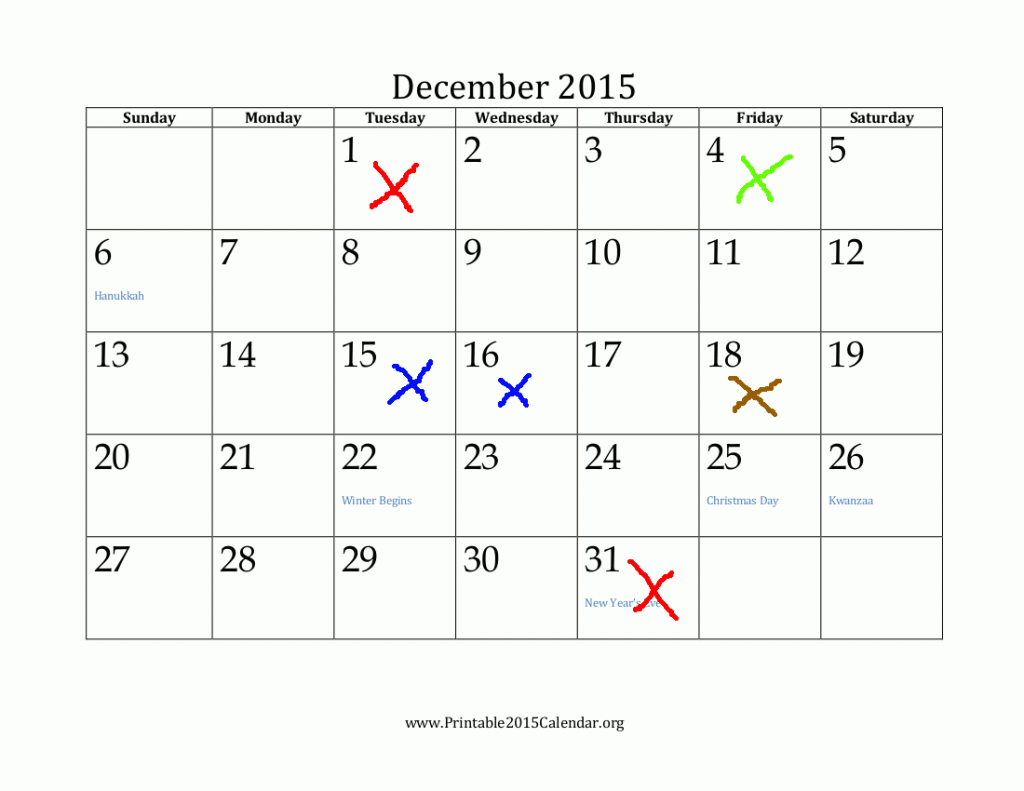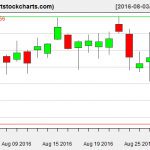6 Riskiest Trading Days of the Month
6 Riskiest Trading Days of the Month
Forget the efficient market hypothesis; there are at least 6 recurring trading days (at least in the US markets) where it’s almost certain volatility will be higher than usual:
- The last day of the month
- The 1st day of the month
- Non-farm payrolls Friday.
- Option expiration Friday.
- FOMC days (aka “Fed Days”.)
- Earnings Announcement days (for specific stocks.)
I’ll explain each of these special trading days further in my article. Be especially wary of doing any of the following on these volatile trading days:
- Day trading
- Establishing new positions or closing out existing positions when pursuing swing trading or even buy and hold investing.
- Rebalancing portfolios
The higher than usual volatility often extends into the two overnight periods before and after that particular trading day so I’d avoid holding any significant positions (other than long-term buy and hold ones) overnight going in and out of these 6 trading days.
#1: The Last Day of the Month
Most financial advisors, fund managers, and other institutional investors are judged on a monthly basis. If you remember back when you were in school, you received report cards on a regular schedule (like every month, quarter, semester, or whatever period your school went by.) If you’ve been doing poorly, you may sometimes make a last minute effort to boost your grades back up near the end of the quarter or semester. And once your marking period is over and report cards are issued, your grades are reset to a new clean slate.
In the Finance world, managers receive the equivalent of a “report card” every month. (They also receive another report card each quarter and one for the entire year as well.) Many portfolio managers tend to sell their losing stocks on the last day of the month to improve the appearance of the portfolio to their clients and superiors; this is often colloquially known as window dressing (the equivalent of the kid in school who is working very hard near the end of the marking period so his/her parents won’t see a bad report card.) As a result, this amplifies the volatility on the downside. This effect is even further magnified upon the end of a quarter or especially the end of a year (around New Year’s eve.) In the latter case, retail investors will often join the fund managers in selling losing stocks but for different reasons: tax-loss harvesting.
#2: The First Day of the Month
As we discussed in #1, new months mark a new beginning for institutional investors as their slate is reset after the report card for last month’s performance has been set in stone. Investment managers see this as the perfect opportunity to launch a new investment strategy. When countless portfolio managers and traders are all executing new trades for their new strategies to pursue in the new month, higher volatility naturally ensues.
#3: Non-Farm Payrolls Friday
On the first Friday every month (or the 2nd Friday if the 1st of the month falls on a Friday), the US Department of Labor releases its preliminary Nonfarm Payrolls report. This information includes the # of jobs gained/lost by the economy which is interpreted as a leading indicator of the economy’s health in the near future due to the new employees (or lack thereof) and their effect on consumer spending which drives the US economy. Investors, managers, and traders are all eyeing this information to influence their investment decisions, and when they all pull the trigger at the same time, volatility will likely spike. Also since this information is released before the market opens on these particular Fridays, it’s prudent not to hold any large or risky overnight positions prior to it.
#4: Option expiration Friday
Although more and more stocks and ETFs offer options that expire every week nowadays, the 3rd Friday of each month has traditionally been the day when options expire. Nevertheless, the 3rd Friday still has the largest volume of options expiring compared to the other Fridays. Often, option sellers have no desire to gain or lose shares of the underlying stock they sold puts or calls on, and if that option ends up expiring ITM (In the Money), that’s exactly what’s going to happen. Option sellers will try to buy back the option they sold (usually at a loss) on expiration day to avoid the unwanted gain or loss of shares of the underlying but often that’s not practical since options, especially deep ITM ones, do not have much liquidity. In that case, they’ll preemptively buy or sell the underlying stock to offset the change in their position due to option exercise.
For example, suppose you sold 4 contracts of a put option on a stock you own and these puts ended up deep ITM. You sell 400 shares of the stock in anticipating of being “put back” 400 shares of the stock on the coming Monday. When thousands of other investors sold options, whether calls or puts, that ended up deep ITM, these investors will be desperately buying and selling stock to cancel out the option assignments, further exemplifying the stock’s volatility.
Volatility will likely spill over to the Monday following Option Expiration Friday as well since option sellers who were assigned shares may choose to dispose or repurchase them after they see their portfolios adjusted on that day after their options were settled. For example, those put sellers who were assigned shares and did not proactively reduce their positions on Friday may choose to sell them as soon as they receive them on the following Monday morning.
#5: FOMC days (aka “Fed Days”.)
The US Federal Reserve generally meets 8 times a year which is less than once a month. These meetings are held for two days at a time and the Fed will announce any interest rate changes as well as the actions they plan on taking to stabilize markets and the economy. Since the Fed has more power to influence the markets than any other participant, most investors will take their message very seriously which in turn will cause volatility to rise dramatically, especially seconds after they make an announcement to the public. In fact, according to Quantpedia, more than 16% of the yearly returns for the S&P500 occur during these 16 trading days of the year. Since the Fed is generally supportive of the markets, the volatility stemming from FOMC days tends to be on the positive side.
#6: Earnings Announcements
Every quarter, publicly traded companies will announce their quarterly earnings and update major items on their financial statements (like revenues) for the prior quarter as well as providing guidance for the future quarters. These are generally the most volatile days of the year for a stock, and moves in excess of +/- 10% are fairly common, even in blue-chip stocks. But unlike the other 5 days discussed here, the volatility is only contained within that stock and maybe some closely related industry peers.
Even though I advise against putting a large portion of your portfolio in a single stock, if that applies to you, it’s best to at least reduce your position a few days before an earnings announcement. You’ll find the next earnings announcement date for any US stock on Yahoo’s earnings calendar; be sure to recheck the dates periodically as they may change every few weeks or so.
Summary: The most volatile trading days of the year
I’ve outlined all of the volatile trading days of the year, so the next step is to make a calendar with all of these days marked. Below, I’ll show you a sample calendar for December 2015 along with which volatile days the X’s correspond to:
- Red: First and last day of the month (pretty self-explanatory.)
- Green: Non-farm payrolls announcements.
- Blue: FOMC Days
- Brown: Options Expiration
- (Not shown): Earnings announcements for specific stocks.
Experienced traders can make a TON of money on these days but beginners are advised to avoid or trade with caution on or around these key days, especially earnings announcements.




